#trauma surgery
Text
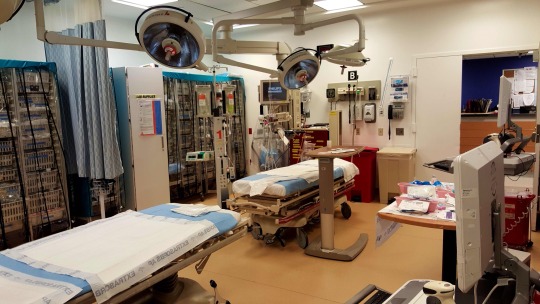
Trauma surgery
“Picture of one of the trauma bays Kings County Hospital Center in Brooklyn, NY.” - via Wikimedia Commons
#wikipedia#wikipedia pictures#medicine#medcore#medicalcore#medicore#medical#wikimedia commons#medical procedure#medical aesthetic#trauma surgery#trauma bay#hospital#hospitals#hospitalcore#hospital aesthetic#emergency department#emergency medicine#emergency medical services#brooklyn#brooklyn ny#nyc#kings county hospital center#medical center#medical facility#surgery#nursecore
15 notes
·
View notes
Text
Trauma senior (to our first year): your job as the intern is to not have the attending need your phone number.

Context: he made a mistake and admitted a patient to the wrong service, resulting in 3 hours of administrative chaos.
#medicine#residency#medlife#we all make mistakes#the attending was super nice#trauma surgery#surgery life
4 notes
·
View notes
Text

#greys anatomy#care lewis#trauma surgery#fakevz#doctor#latina#surgeon#nothings gonna stop me now#trauma surgeon#hispanic#resident#downloaded from google
9 notes
·
View notes
Text
FIRST THING CHARGE RN TELLS ME WHEN I WALK IN: “THERE’S 2 SUTURE KITS IN THE WHOLE HOSPITAL, SO LET’S HOPE NO LACS COME IN TODAY.”

…I have no words, but that was my reaction
#pablr#pa school#physician assistant#pa-s#clinical year#emergency medicine#pa-c#medicine#surgery#medblr#nurblr#internal medicine#trauma surgery#supply chain problems#the fresh prince of bel air#will smith
4 notes
·
View notes
Text
Trauma Surgeon's Crucial Role in the Trauma Center
Dr. Stephen M. Cohn, a former surgeon in the United States Army Medical Corp during Desert Storm, has an extensive and distinguished career. He served as the Division Chief of Trauma and Surgical Critical Care at Yale University School of Medicine, Director of the Ryder Trauma Center in Miami, and Chairman of the Department of Surgery at the University of Texas Health Science Center. Currently…
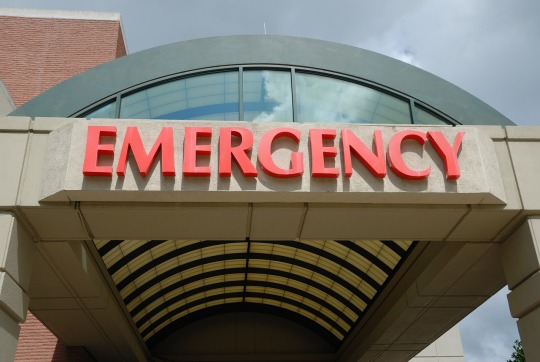
View On WordPress
#kickalzheimersassmovement#Betsy Wurzel#Dr. Stephen M. Cohn#Emergency Room Physician#Quarterback.#Teachers#Trauma#Trauma Center#Trauma Surgery#University of Massachusetts#Yale
0 notes
Text
Behind the Scenes: A Day in the Life of Trauma Surgeon Dr. Ashish Arbat
Dr. Ashish Arbat as he navigates a typical day in the fast-paced world of trauma surgery. From early morning emergency calls to performing life-saving procedures in the operating room, readers will gain a firsthand understanding of the challenges and rewards of this high-pressure profession. Through detailed descriptions and personal insights, this blog post offers a unique perspective on the daily life of a trauma surgeon, highlighting the dedication, skill, and teamwork required to save lives in critical situations.
More information know visit our website
0 notes
Text
Get to know about bone fractures & treatment in Mumbai, from one of the top bone fracture doctors in Mumbai, Dr Niraj Vora. He is Top Trauma Surgeon in Mumbai.
0 notes
Text
Gallbladder surgery is widespread, and many doctors have experience with it. The surgery involves removing the gallbladder because the body can function normally without a gallbladder, although some patients experience slight changes in how they digest food. Surgeons typically perform gallbladder removal when the gallbladder becomes diseased or causes significant health issues or concerns. For gallbladder concerns, consider visiting our surgeon in Los Angeles, California.
0 notes
Text
TRAUMA SURGERY IN PUNE
Best Trauma Surgeon in Pune
Achieve the best health possible
Gastroenterologists in Pune are surgeons with expertise in different areas of surgery. Dr. Nikhil Jillawar is the best trauma surgeon in Pune and has been successful in managing cases that may be considered unusual or difficult.
Qualified and experienced surgeons
We are a team of qualified and experienced surgeons who specialize in various areas like laparoscopic surgery, colorectal cancer surgery, liver transplantation, etc.
Common Trauma Surgery Procedures
Craniotomy: Opening the skull in surgery to remove a clot and lower brain pressure
Craniectomy: removing a part of the skull bone to give the brain more room to swell This type of surgery may also be done when a clot is removed.
Gastrostomy: Surgery to make an opening in the stomach to place a feeding tube This surgery is often done at the bedside. The feeding tube is usually temporary. It may be removed by the doctor when the patient is able to eat food.
Jejunostomy: Surgery to make an opening into the small intestine for placing a feeding tube. This feeding tube is often temporary. It may be removed by the doctor once the patient is able to eat food.
Laparotomy – Surgery that opens the abdomen. When it is opened, doctors can examine and treat organs, blood vessels, or arteries.
Tracheostomy – Surgery that makes an incision in the throat area just over the trachea to insert a breathing tube. When complete, the breathing tube in the mouth will be taken out.
Contact us -
Address - Aditya Birla Hospital Marg, Onkar Colony, Yashoda Colony, Wakad, Pimpri-Chinchwad, Maharashtra 411033
Phone: +91 9099 058 141
Email: [email protected]
#besttreatment#surgery#gastroenterologistinmoshi#gastrologist#moshi#drnikhiljillawar#Moshi#Pune#gastrostomy#Gastrostomy#trauma surgery
1 note
·
View note
Text

miscellaneous shikatema doodles
#shikatema#shikamaru#temari#naruto#naruto shippuden#boruto#pandy draws#gonna be scarce for the next 5 weeks#bc I’m starting my trauma surgery rotation#🫡 it was nice knowing y’all
3K notes
·
View notes
Text
Case Report of Cervical Birth Trauma Leading to Postpartum Haemorrhage in Teenage Pregnancy
Abstract
Background: Postpartum haemorrhage PPH is an extremely important, and regrettably, an indelibly common complication of childbirth affecting nearly 10% of all deliveries. When it occurs, it is however, extremely rare to find a cervical injury as the primary cause of bleeding. We present this report as reminder that this may in fact be so. This is important, because if not identified, haemorrhage may continue unabated, leading to a heightened risk of maternal harm and escalating morbidity.
Case: Presents a 16-year-old woman following unassisted vaginal delivery complicated by postpartum haemorrhage from a spontaneous cervical tear. Appropriately identified, the injury was successfully repaired by suture during EUA in theatre under regional anaesthesia.
Conclusion: An incidence of cervical injury leading to significant postpartum haemorrhage following spontaneous vaginal delivery that was successfully managed leading to safe, effective, early care.
Read More about this Article:https://juniperpublishers.com/jojcs/JOJCS.MS.ID.555862.php
Read More Juniper Publishers Google Scholar: https://scholar.google.com/citations?view_op=view_citation&hl=en&user=rp_7-igAAAAJ&citation_for_view=rp_7-igAAAAJ:Y0pCki6q_DkC
#Juniper Publishers Google Scholar#Juniper Publishers Review#Journal of Case Studies#trauma surgery#Fibreoptic intubation#case studies
0 notes
Note
What’re Pangur and Grim like at the vet? Do they try to befriend the vet or hate them?
Grim has changed, which makes me really sad. the vet used to have a hard time listening to her heart, because she'd be purring so loudly and head-bumping their hand.
a couple years ago, she went in for surgery to get a potentially cancerous lump cut off her head, and since then she's acted extremely fearful at the vet. it's hard now to get her out of the carrier.
Pangur, on the other hand, has never changed. she scream-meows nonstop, tries to climb me (hooking her claws into my clothing), and generally does her best to resist anything done to her.
#maybe someone was too rough with Grim at the clinic where she got surgery?#or maybe going through a surgery is enough trauma in of itself#either way I'm sad that my happy head-butting cat is now so terrified
926 notes
·
View notes
Text
When it's hour 22/26 and the early AM giggles hit...
and your trauma surgery team turn out to be the funniest people you've ever met. :D
0 notes
Text


Sipping red out of crystal glasses.
#greys anatomy#trauma surgery#care lewis#doctor#fakevz#latina#surgeon#teddy altman#nothings gonna stop me now#downloaded from google#I don’t own the rights :)
2 notes
·
View notes
Text
MY DEMENTED LADY WITH A CERVICAL FRACTURE VS. HER COLLAR

#pablr#pa school#physician assistant#pa-s#clinical year#emergency medicine#pa-c#medicine#orthopedics#no less than 50 times#Bobby knight#trauma surgery#nurblr#medblr
1 note
·
View note
Text
Introduction to Orthopedic Surgery: A Comprehensive Guide
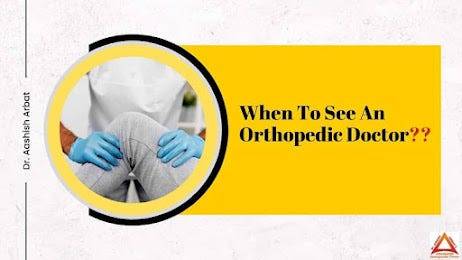
Exploring the Advancements: The Role of Robotic Surgery in Orthopedics
In recent years, the incorporation of robotic surgeries in orthopedics has transformed the landscape of orthopedic surgery. The benefits of robotic-assisted surgery, with its increased precision and capability, is revolutionising the way orthopedic treatments are performed. This section will go over the advantages of robotic-assisted surgery, the changing landscape of orthopedic robotic technology, and how these improvements are enhancing surgical outcomes.
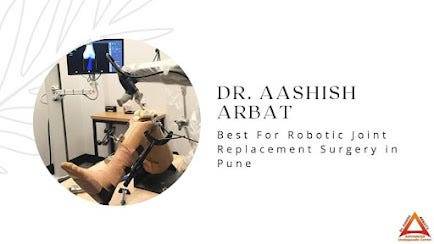
The advantages of robotic-assisted surgery include shorter recovery times and less postoperative pain for patients. Many robotic procedures are minimally invasive, resulting in smaller incisions and a quicker return to normal activities.
The field of orthopedic robotic technology is constantly advancing. Advanced robotic arms, real-time imaging capabilities, and greater haptic feedback for surgeons are among the advancements. As these technologies advance, the potential for improving surgical precision and patient outcomes grows.
Understanding Knee Surgery: When and Why it’s Necessary
Knee surgery includes arthroscopy, meniscus repair, ligament restoration, and knee replacement. Arthroscopy, a minimally invasive method, involves inserting a small camera and tools through tiny incisions to diagnose and treat various knee diseases. Knee replacement surgery, on the other hand, is a more invasive process that involves replacing damaged or diseased knee joints with artificial implants.

The recuperation process after knee surgery is significant. Physical therapy is critical in restoring strength, flexibility, and function to the knee joint as part of the knee surgery recovery. Patients are frequently advised to participate in a personalised rehabilitation programme to maximise their recovery. The recovery timeframe is influenced by factors such as the type of operation, the patient’s overall health, and compliance with rehabilitation regimens.
Hip Surgery Demystified: A Deep Dive into Procedures and Recovery
The hip joint, which is a ball-and-socket structure, is prone to a variety of disorders that may demand surgical intervention. This section will debunk the various types of hip procedures, go into the complexities of hip joint replacement, and shed light on the post-hip surgery rehabilitation process.

Understanding the complexities of hip joint replacement and other types of hip surgery is critical, particularly for individuals contemplating or having such treatments. Hip surgery recovery and success is influenced by factors such as implant selection, surgical methods, and postoperative care.
Hip surgery recovery is a gradual return to activity guided by a comprehensive rehabilitation programme. Physical therapy is essential for improving strength, stability, and range of motion. To facilitate a smooth recovery, patients are usually recommended to avoid high-impact activities and to follow postoperative recommendations.
Shoulder Surgery: Common Issues and Surgical Solutions
The shoulder joint is extremely flexible and has a vast range of motion. This mobility, however, makes it vulnerable to injuries and illnesses that may necessitate surgical intervention. This section will discuss numerous shoulder operations, including frequent conditions that demand surgical intervention and the rehabilitation process.

It is critical for both patients and healthcare practitioners to understand the specific conditions that lead to shoulder joint surgery. Persistent shoulder pain, weakness, and limited range of motion are common signs that may signal the need for surgery. Early detection and intervention are critical for avoiding more damage and improving outcomes.
In shoulder surgery recovery, the healing includes a period of rest, followed by a gradual rehabilitation programme. Physical therapy can help you regain strength and function in your shoulder joint. During the early stages of recuperation, patients are usually advised to avoid activities that could strain the shoulder.
Navigating Trauma Surgery in Orthopedics: A Closer Look
Orthopedic trauma surgery is essential in treating musculoskeletal injuries caused by accidents, falls, or other stressful occurrences. It is important to understand the complexity of trauma surgery while emphasising the significance of quick interventions in emergency orthopedic cases.

The diversity and unpredictability of injuries pose issues in trauma surgery. Each situation necessitates a unique strategy, and surgeons must be prepared to adapt to the patient’s special needs. Imaging procedures like X-rays and CT scans aid in precise diagnosis and treatment planning.
Orthopedic trauma surgeons frequently work with other medical specialists, such as emergency medicine doctors, ane sthesiologists, and radiologists. This multidisciplinary approach guarantees that patients with complex musculoskeletal problems receive thorough therapy.
Arthroscopy: A Minimally Invasive Approach to Orthopedic Diagnosis and Treatment
Arthroscopy has evolved as a vital technique in orthopedics, allowing for a less invasive approach to diagnosis and therapy.
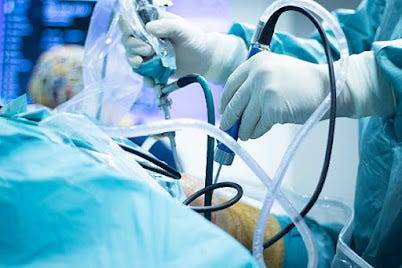
Arthroscopy can help with a variety of orthopedic disorders, including ligament injuries, meniscus tears, and joint inflammation. Surgeons may see within the joint directly, allowing for more exact diagnosis and therapy. Ligament rebuilding, meniscus repair, and synovial debridement are all common arthroscopic operations.
Patients who have arthroscopic surgery frequently have less postoperative pain, less scarring, and a quicker return to normal activities. In many circumstances, the minimally invasive aspect of arthroscopy helps to shorter hospital stays and outpatient surgeries
What to Expect After Procedures”: “Orthopedic Surgery Recovery Tips”

Follow Postoperative directions: It is critical to follow the particular directions offered by the surgical team for a complete recovery. This may involve activity restrictions, medication regimes, and wound care.
Physical Therapy: Physical therapy is an essential component of orthopedic surgery rehabilitation. Working with a qualified physical therapist can help you increase your strength, flexibility, and range of motion. Regular treatment sessions might help you recover faster and more effectively.
Monitor Pain Levels: Pain management is an important aspect of the rehabilitation process. Patients are frequently administered pain medications to relieve discomfort during the early stages of recovery. It is critical to talk with healthcare experts about your pain levels and any drug problems.
Gradual Return to Activities: Depending on the type of operation, patients may need to gradually reintegrate activities into their routine. To avoid overexertion and minimise the possibility of problems, it is critical to take a stepwise approach.
Maintain a Healthy Diet: A healthy diet is essential in the healing process. Adequate nutrition promotes tissue repair and overall healing. Consult with your healthcare physician or a dietitian to ensure that your dietary choices are in line with your recovery goals.
Stay Hydrated: Staying hydrated is important for general health and aids in the healing process. Drinking enough water maintains cellular function and helps prevent issues such as constipation, which is a typical post-surgery concern.
Attend Follow-Up Appointments: It is critical to attend regular follow-up appointments with the surgeon and healthcare team to assess progress and resolve any problems. These meetings allow the doctor to modify the treatment plan based on the patient’s progress.
Be Patient: Orthopedic surgery recovery is a long process that differs from person to person. Patience is essential, and realising that progress may take time helps to maintain a positive attitude during recuperation.
Patients can improve the overall success of orthopedic surgery interventions by implementing these recovery guidelines into their postoperative journey.
The Future of Orthopedic Surgery: Robotic Innovations and Beyond
The future of orthopedic surgery promises intriguing potential as technology advances. The robotic advancements in orthopedics are reshaping the orthopedic surgery scene. Understanding the emerging technologies and the field’s trajectory is critical for both healthcare professionals and patients.
The future of orthopedic surgery is inextricably linked to advances in robotic technology. Robotic-assisted surgery, which is already making tremendous progress, is projected to become increasingly common in a wider range of orthopedic treatments. Improved robotic devices with greater artificial intelligence capabilities could improve surgical precision and results even further.
Another area of interest is the incorporation of virtual reality (VR) and augmented reality (AR) into orthopedic surgery. These technologies have the ability to improve preoperative planning, provide real-time guidance during surgery, and provide surgeons with immersive training experiences.
Biotechnology and regenerative medicine are set to have a significant impact on the future of orthopedic surgery. Tissue engineering, stem cell treatment, and biomaterials research aims to promote tissue regeneration and repair by developing novel solutions.
Telemedicine and remote patient monitoring are quickly becoming essential components of postoperative care. Patients may be able to participate in virtual follow-up appointments, decreasing the need for in-person visits and giving more accessible healthcare options.
Collaboration among orthopedic surgeons, engineers, researchers, and other stakeholders becomes increasingly crucial as the discipline advances. Interdisciplinary approaches stimulate innovation and contribute to the creation of solutions that address the various requirements of patients.
Comparing Orthopedic Surgeries: Knee vs. Hip vs. Shoulder Procedures
Orthopedic procedures differ dependent on the joints they treat, with each bringing its own set of problems and considerations. A comparison of knee vs hip vs shoulder surgery highlights the significant variations in procedures and recovery times depending upon the differences in orthopedic procedures
Knee Surgery: Knee surgeries include procedures such as arthroscopy, ligament reconstruction, meniscus repair, and knee replacement. Knee surgery may be recommended for diseases such as ligament injuries, meniscus tears, osteoarthritis, and fractures. The recovery process for knee surgery is staged, with an early emphasis on pain management, swelling reduction, and the progressive return of weight-bearing activities.
Hip Surgery: Hip Surgery Types: Hip arthroscopy, hip resurfacing, and complete hip replacement are all types of hip procedures. Hip Impingement, labral tears, osteoarthritis, and hip fractures are all conditions that may demand surgical intervention. Recovery from hip surgery entails carefully monitoring weight-bearing activities, adhering to postoperative precautions, and gradually returning to normal function.
Shoulder Surgery: Shoulder Surgery Types: Shoulder procedures treat issues such rotator cuff tears, labral tears, and shoulder instability.
Indications for Shoulder Surgery: Shoulder discomfort, weakness, and limited range of motion are common reasons for surgery. Following shoulder surgery, the recovery time involves a period of rest, physical therapy to regain shoulder function, and a gradual return to activity.
Orthopedic Surgery for Athletes: Addressing Sports-Related Injuries
Athletes are more vulnerable to musculoskeletal problems due to the physical demands of sporting activities. This section will concentrate on orthopedic surgery for athletes, addressing sports-related injuries and investigating surgical procedures meant to allow a quick return to athletic performance.
Common Sports Injuries:
ACL Tears: ACL injuries are common in athletes who participate in sports that require rapid stops, pivoting, and changing directions.
Meniscus Tears: Meniscus tears are common in sports that involve frequent twisting and turning movements, causing cartilage injury in the knee.
Rotator Cuff Injuries: Athletes participating in overhead sports such as baseball or swimming may get rotator cuff injuries, impairing the shoulder’s stability.
Rotator Cuff Injuries: Athletes participating in overhead sports such as baseball or swimming may get rotator cuff injuries, impairing the stability of the shoulder.
There are various surgical interventions for athletes targeted at improving the function and mobility that is unique to each one.
Arthroscopy vs. Traditional Surgery: Weighing the Options in Orthopedics
In the field of orthopedics, the decision between arthroscopy and standard surgery is crucial for both patients and healthcare workers. Arthroscopy, a minimally invasive method, and traditional orthopedic procedures, a more traditional approach, each offer specific advantages and considerations.

Arthroscopy allows surgeons to see the damaged joint in real time, allowing for precise diagnosis and treatment. This minimally invasive approach is very useful for repairing ligaments, cartilage damage, and joint inflammation.
Traditional orthopedic surgeries, on the other hand, involve larger incisions and more tissue damage. While they are still useful in some complex instances, the longer recovery time and increased risk of problems associated with traditional surgery necessitate a careful assessment of the available options.
The decision between arthroscopy and standard surgery is ultimately determined by criteria such as the nature and severity of the orthopedic difficulty, patient preferences, and the surgeon’s expertise. Striking a balance between the benefits of arthroscopy and the appropriateness of traditional techniques ensures individualised and effective treatment methods for individual patients in the evolving area of orthopedics.
0 notes